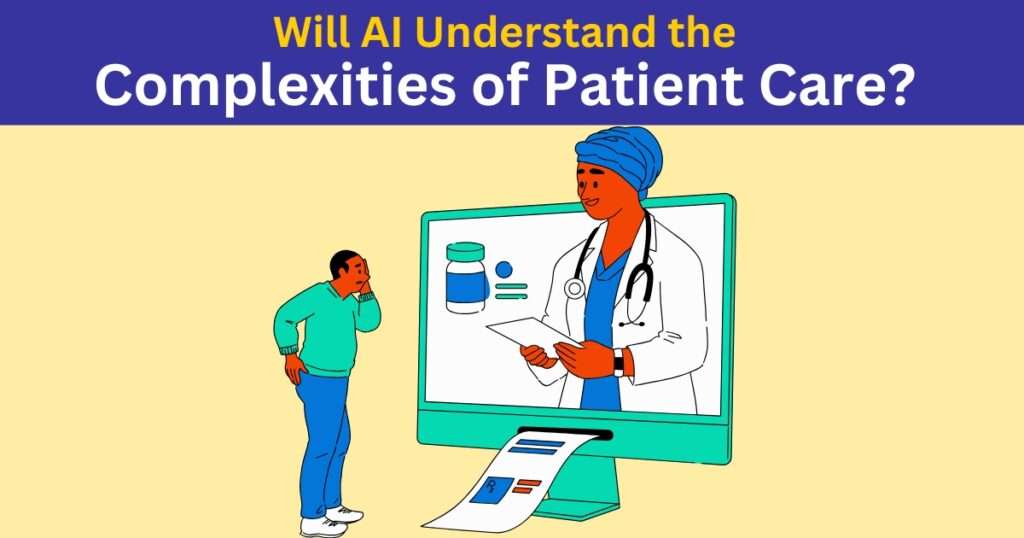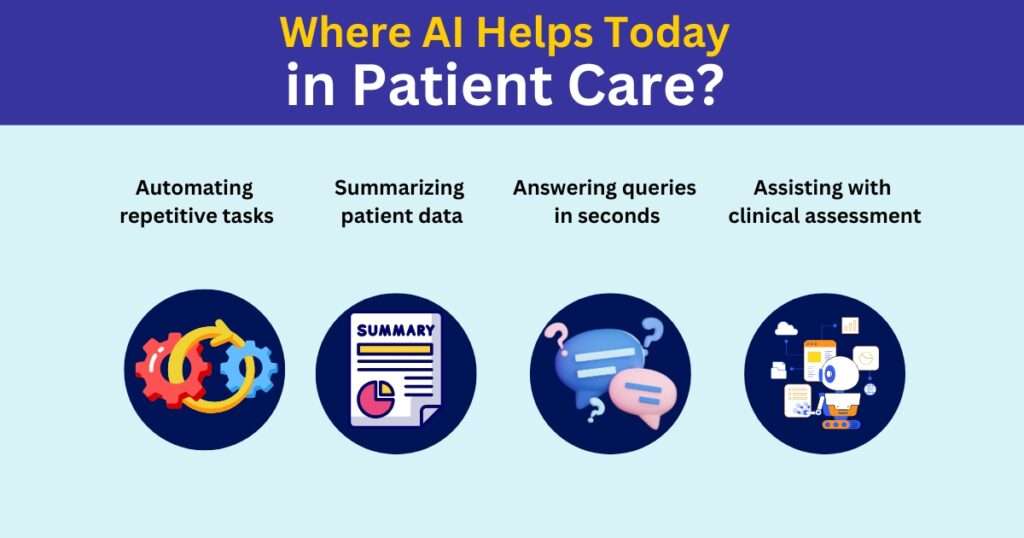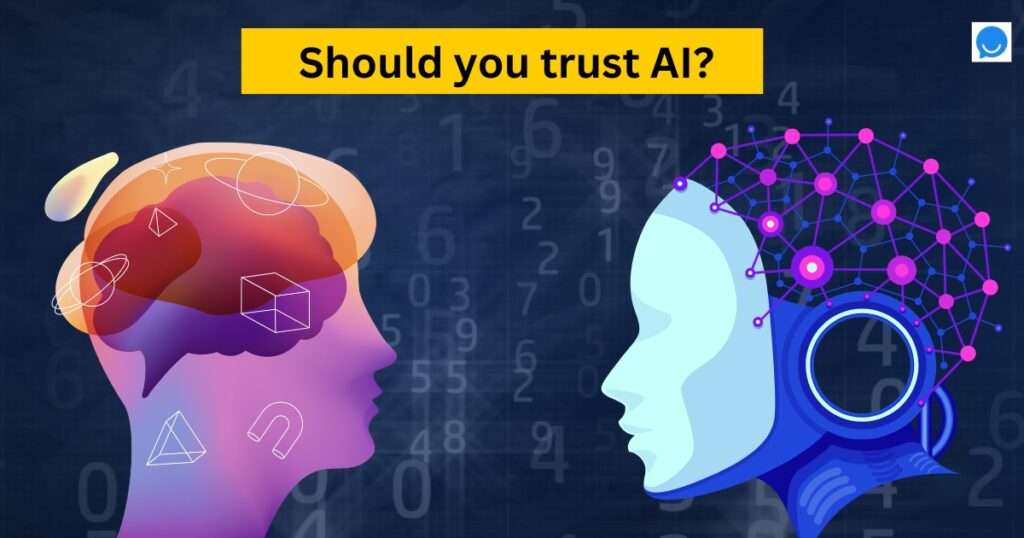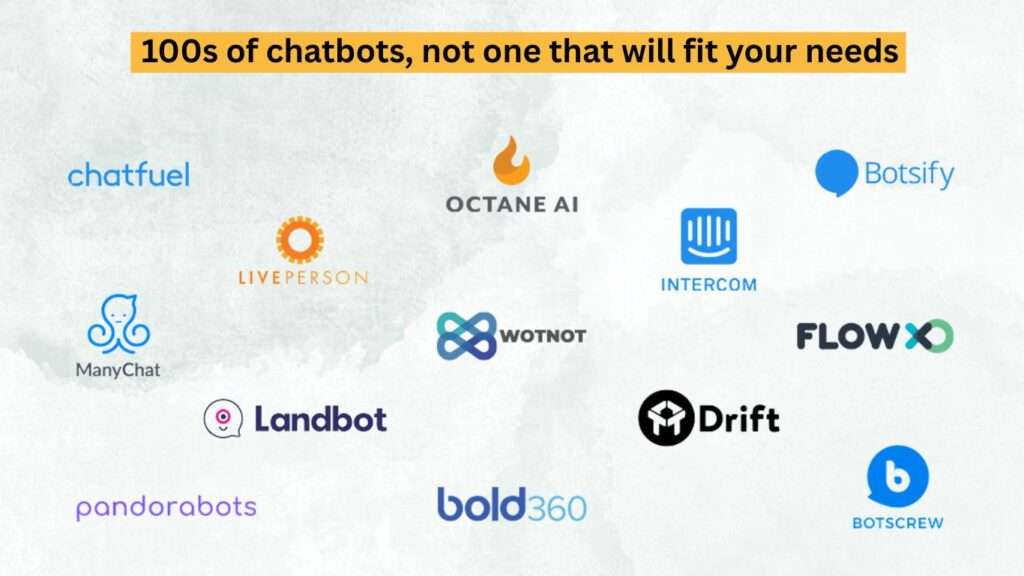Artificial intelligence is no longer a futuristic idea in healthcare—it’s already here. From scheduling appointments and triaging symptoms to analyzing scans and streamlining paperwork, AI is being woven into how hospitals and clinics operate.
But as this technology moves closer to the point of care, a deeper question surfaces:
Can AI truly understand the human side of medicine?
Because patient care isn’t just about test results or treatment protocols. It’s about listening, noticing what’s unsaid, understanding context, and building trust. These are things that don’t always show up in data but they shape outcomes in real, measurable ways.
This article explores whether AI can rise to that challenge. We’ll look at where it’s helping today, where it still falls short, and what a thoughtful, balanced approach to AI in patient care might look like.

What Makes Patient Care Complex?
Treating patients isn’t just about solving medical problems. It’s about understanding people each with their own fears, beliefs, background, and expectations.
Two patients with the same diagnosis might need very different patient care. One may want every detail and full involvement in decision-making. The other may just want the doctor to choose what’s best. One might speak up. The other might silently endure.
What makes patient care complex is:
- Emotional cues that aren’t documented anywhere.
- Cultural factors that shape how symptoms are described or treatment is accepted.
- Social conditions—like family support, income, or literacy—that impact health outcomes.
- Trust, or the lack of it, which influences how openly patients communicate.
This is the part of patient care that isn’t written in guidelines or lab reports. It’s built in conversation, over time, with attention to nuance. It’s what makes healthcare deeply personal and why replicating it with algorithms is not as simple as feeding data into a model.
Where AI Helps Today?
While AI may not fully grasp the emotional layers of patient care, it’s already proving useful in areas where speed, structure, and scale matter.
Today, AI is helping healthcare providers by:
- Automating repetitive tasks like appointment scheduling, record-keeping, and follow-up reminders.
- Assisting with clinical assessment, using chatbots or digital forms to sort symptoms and direct patients to the right level of patient care.
- Summarizing patient data across records to give doctors a faster, clearer overview.
- Supporting diagnosis, especially in radiology, dermatology, and pathology, where image recognition plays a key role.

In each of these areas, AI acts as a force multiplier. It doesn’t make emotional decisions—but it handles the operational burden, giving clinicians more time and headspace for real patient interaction.
Used right, AI isn’t replacing patient care it’s making room for more of it.
The Limits of AI in Understanding Patient Care
AI has come a long way in processing medical data and supporting clinical decisions. But when it comes to understanding the emotional, cultural, and personal layers of patient care, it still has some growing to do.
Today’s AI systems:
- Don’t pick up on emotional nuance the way a human can.
- Can’t fully interpret context like why a patient might hesitate to speak up, or how culture shapes medical decisions.
- Often work like a black box, where recommendations are made without clear reasoning.
- Are only as good as the data they’re trained on, which can sometimes miss underrepresented groups.
These are challenges, not deal-breakers.
The goal isn’t to dismiss AI it’s to use it wisely. Let it take care of the operational load, while humans handle the parts of care that require empathy, intuition, and trust.
With the right guardrails and thoughtful design, AI can complement human care—not compete with it.
Can AI Evolve to Do More?
AI is improving fast. What once required massive datasets and predefined rules can now be achieved with more flexible, adaptive models that learn on the go.
We’re seeing early signs of progress in areas that hint at a deeper role for AI in care:
- Multimodal models that combine text, images, voice, and sensor data to form a more complete view of the patient.
- Explainable AI, which helps doctors and patients understand how and why a recommendation was made.
- Digital twins virtual models of patients that simulate how an individual might respond to different treatments.
- Conversational agents that are becoming more responsive, context-aware, and emotionally attuned.
These aren’t perfect solutions, and they’re still evolving. But they point to a future where AI might not just process care but start to better understand it.
The key is direction. If AI is developed to support human care, not replace it, we may get closer to systems that not only improve outcomes but also respect the complexity of being human.
What a Balanced Approach Looks Like?
The goal isn’t to choose between AI and human care. It’s to find the right mix where each does what it’s best at.
A balanced approach means:
- Letting AI handle the predictable: scheduling, documentation, follow-ups, and pattern recognition. These tasks drain time and energy that could be better spent with patients.
- Keeping humans in charge of the unpredictable: complex decisions, emotional conversations, and building trust. This is where context, empathy, and intuition matter most.
- Designing AI tools that fit into real workflows, not ones that disrupt or replace them. The best tools feel like quiet collaborators, not intrusions.
- Training healthcare teams to use AI effectively knowing when to lean on it, and when to lead without it.
- Prioritizing explainability and fairness in AI design, so that both clinicians and patients understand and trust the technology behind their care.
It’s not about making care more technical.
It’s about making technology serve care not the other way around.
Conclusion
AI is changing how healthcare operates. There’s no denying its impact faster workflows, earlier detection, better resource use. But the real test isn’t what AI can automate. It’s whether it can coexist with the human side of care.
Because patient care isn’t just clinical it’s personal. It’s emotional. It’s built on trust, nuance, and connection. And that’s not something any algorithm can fully replicate.
Will AI ever truly understand all of this? Maybe not.
But it doesn’t have to.
If we build and use AI to support, not replace, the human parts of medicine, it can help us do what matters most: spend more time listening, connecting, and actually caring.
That’s the future worth aiming for.





4 Comments
Very well written. But I feel it’s only a matter of time when AI starts understanding patient nuances much better. Doctors are already super tired and many times, also biased. AI might become better than avg doctors at patient care. But I agree that AI is not there yet.
Very well written. But I feel it’s only a matter of time when AI starts understanding patient nuances much better. Doctors are already super tired and many times, also biased. AI might become better than avg doctors at patient care. But I agree that AI is not there yet.
AI can help in managing tasks but it will never give the required emotional support
AI is improving healthcare by handling repetitive tasks and supporting diagnoses. But it can’t replace human empathy or understanding. A balanced approach lets AI assist while humans focus on emotional care and trust-building. Together, they create better outcomes for patients.